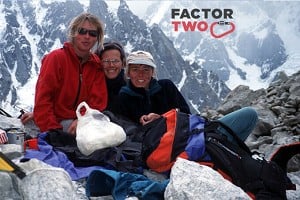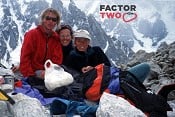In reply to GrendeI:
Brittle ice is brittle ice.
Either use existing placements and hook.
Choose your spot carefully to place your tool (small concavities) and use tools with very sharp picks gently but powerful swing with wrist flick to finish. First blow may knock of any surface brittle ice (called a dinner plate)then ensure next placement is in the exact same place.
Bottom line climbing brittle ice - unless someone has climbed it before you - generally you'll have to do the clearing. This will involve creating debris. The knack is climbing it efficiently otherwise you'll waste a great deal of energy smashing your way up the pitch.
If it's vertical then hooking is your main(only?)option.
Another good reason why you never, ever follow someone up an ice climb. Great way to ensure you require facial reconstruction, at best, at worse I've seen large enough sections come up off that if hit you in the face would kill you...









